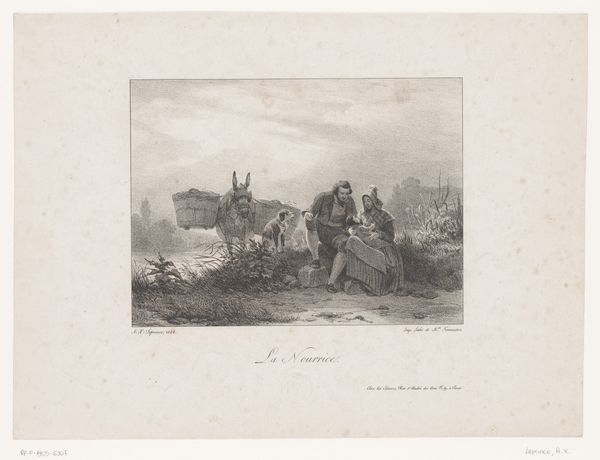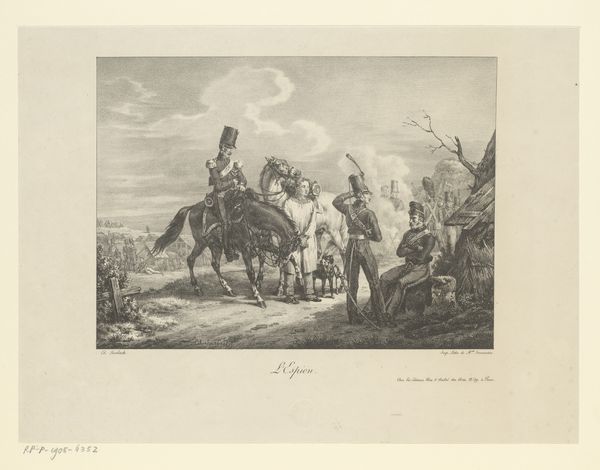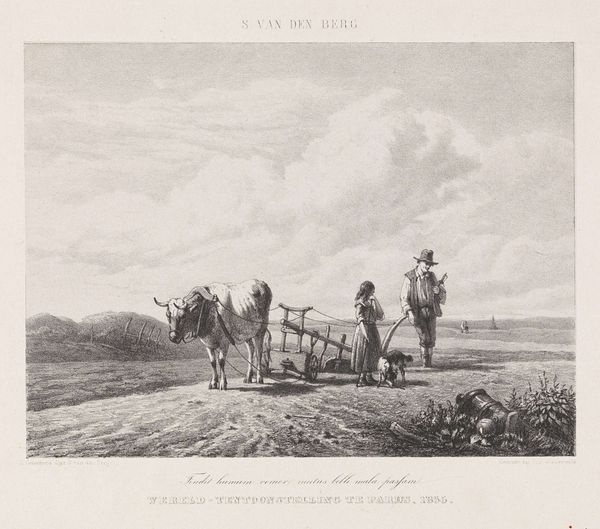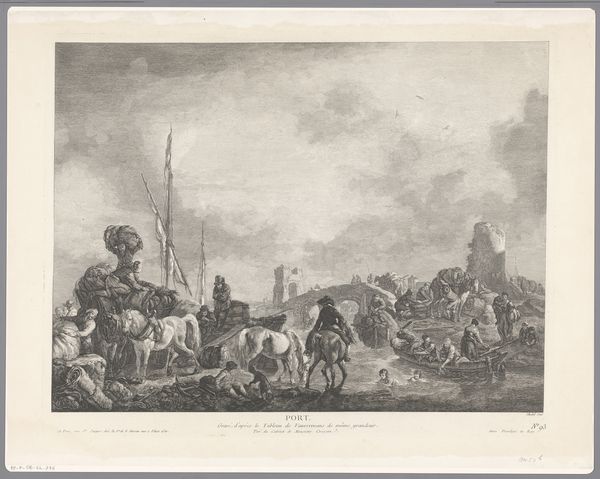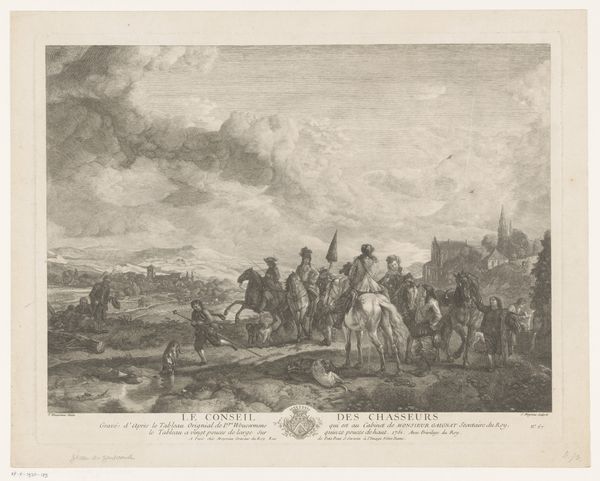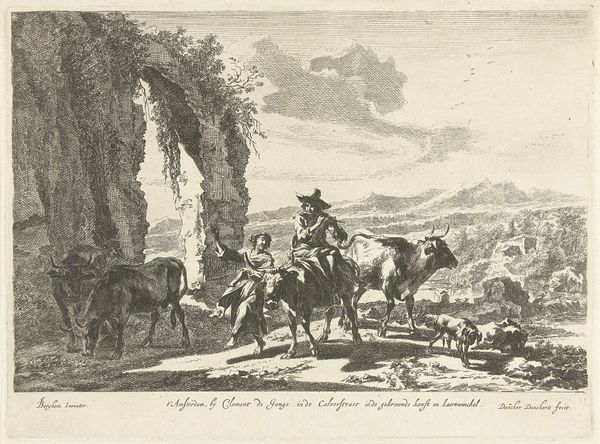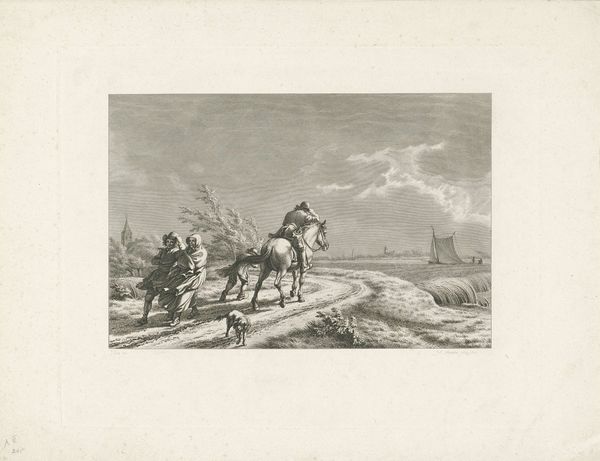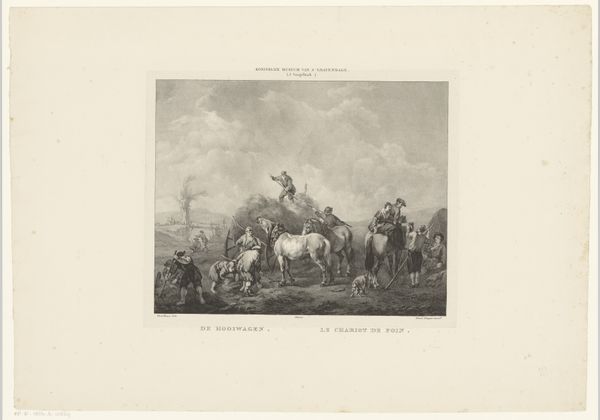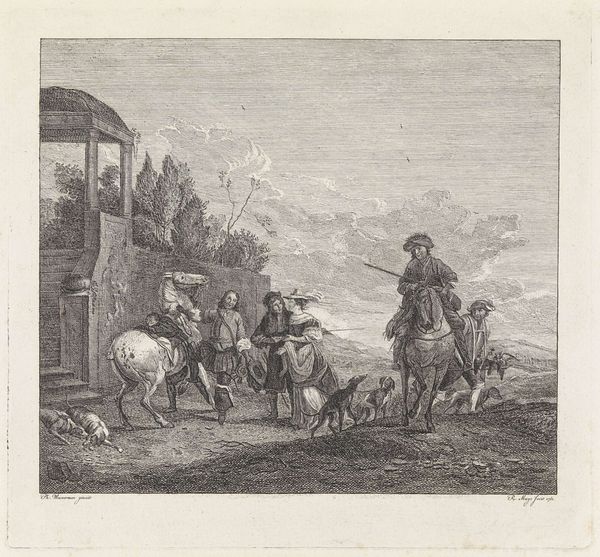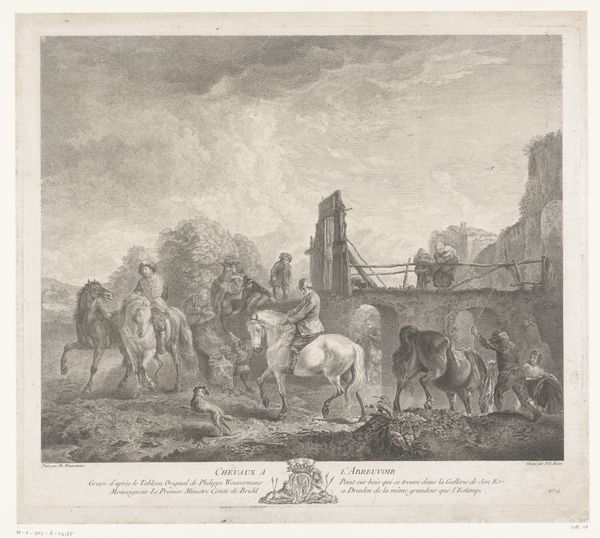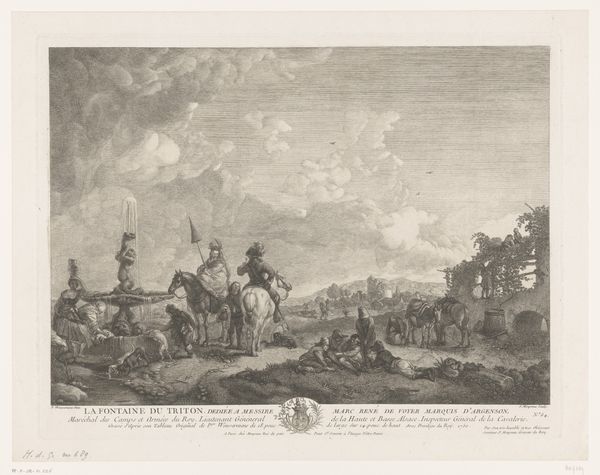
print, graphite, engraving
# print
#
dog
#
old engraving style
#
landscape
#
river
#
romanticism
#
horse
#
graphite
#
genre-painting
#
graphite
#
engraving
#
realism
Dimensions: height 265 mm, width 302 mm
Copyright: Rijks Museum: Open Domain
Curator: This is "Paardenwed bij een grenspaal," or "Horse Watering at a Boundary Post," an engraving dating back to 1803. The artist was Reinier Vinkeles, a figure known for detailed prints capturing everyday scenes. Editor: My first impression is of organized chaos, a scene teeming with figures yet remarkably balanced in its composition. The muted tones lend it a timeless, almost ethereal quality. Curator: Precisely! Look at the way Vinkeles employs the engraving technique, creating intricate details. We can almost feel the textures of the horses' coats and the roughness of the boundary post. The print would have been made using a painstaking process involving metal plates and etching, requiring skilled labor to produce each impression. Editor: Indeed. I'm struck by how the strong diagonal lines created by the composition-- the angle of the approaching horses and the line of figures toward the structure, leads the eye through the image. Also note the contrast between the dark foreground and the softer, lighter sky— a brilliant compositional trick. Curator: These images weren't just artistic expressions, of course. They were commodities. Prints like this would have been reproduced and sold widely, consumed by a growing middle class eager to engage with depictions of rural life and national identity. Editor: From a purely formal viewpoint, note the effective use of chiaroscuro. The figures in shadow versus the light upon the horses—it amplifies the sense of depth. The figures surrounding the watering hole frame and highlight the central scene of the horses. Curator: What I find compelling is the social dimension – the collective labor around a crucial resource. It captures a shared need, where humans and animals converge. Also it is an indication of society’s control over animals as draught animals are one of society’s productive means. Editor: It certainly opens a window into that world, though I confess I’m drawn more to the sophisticated organization of the imagery itself. I will say that this exploration into material and class context enriches my reading. Curator: Likewise, your perspective heightens my appreciation for Vinkeles' formal choices! Thank you.
Comments
No comments
Be the first to comment and join the conversation on the ultimate creative platform.
